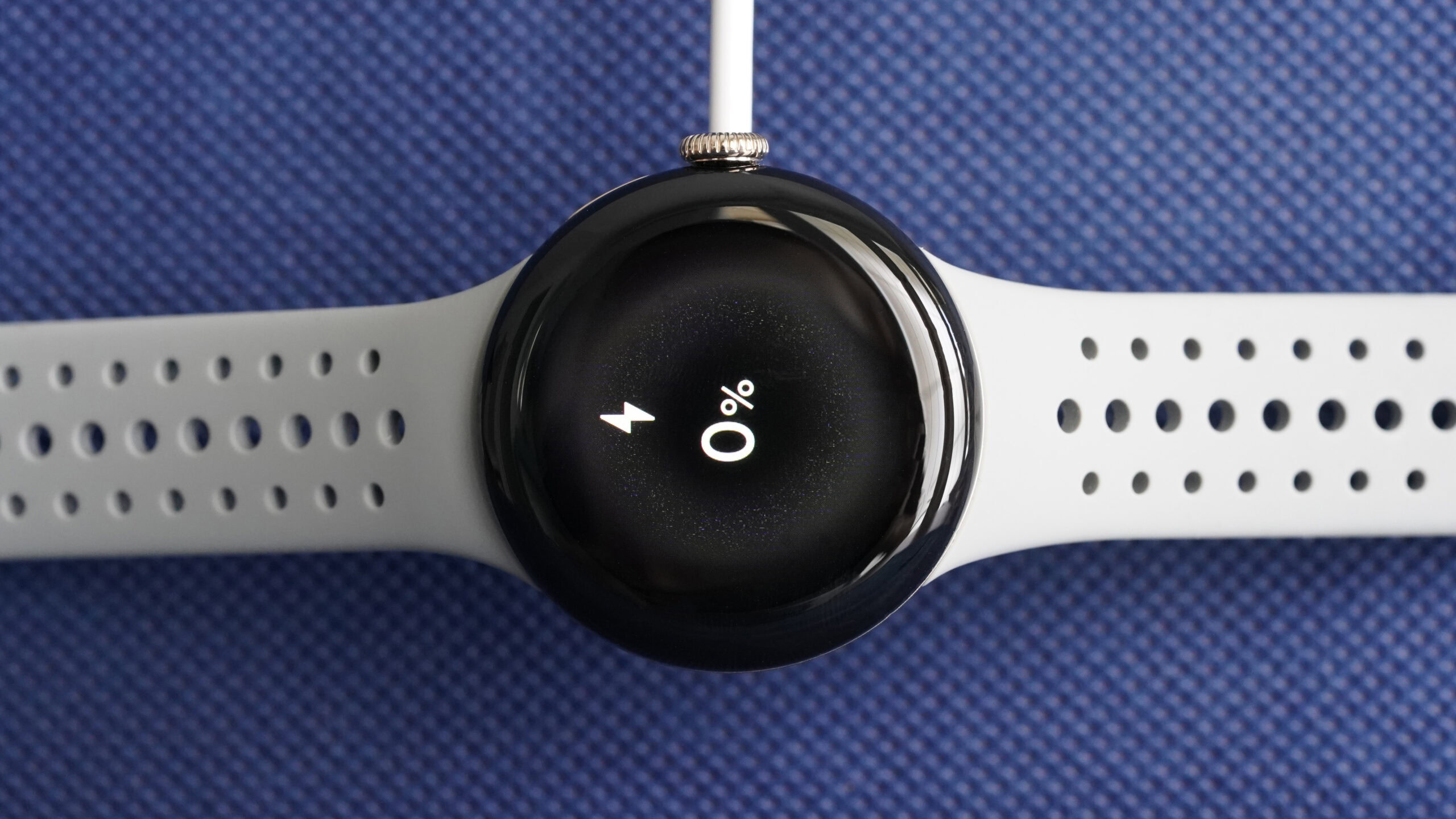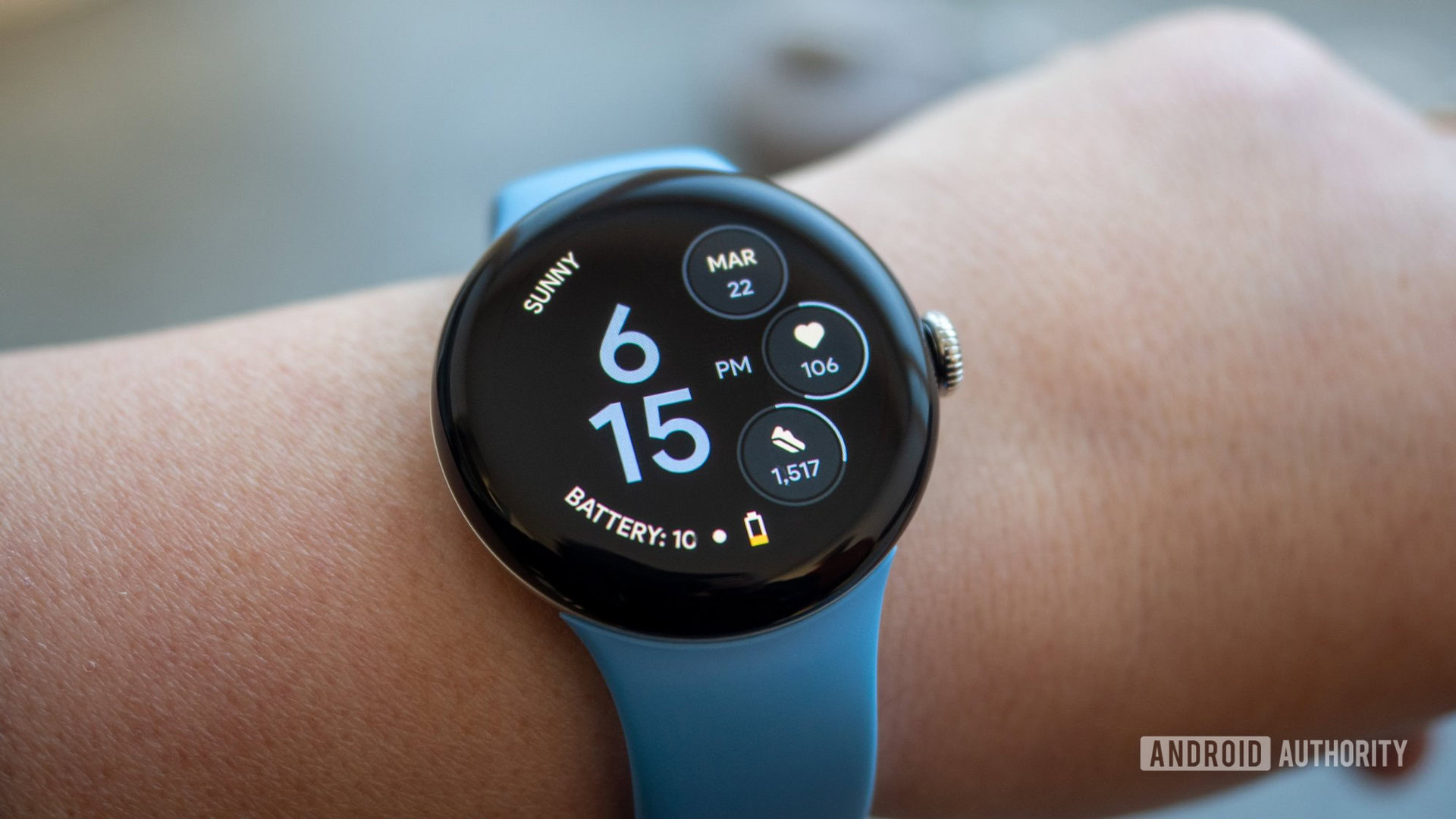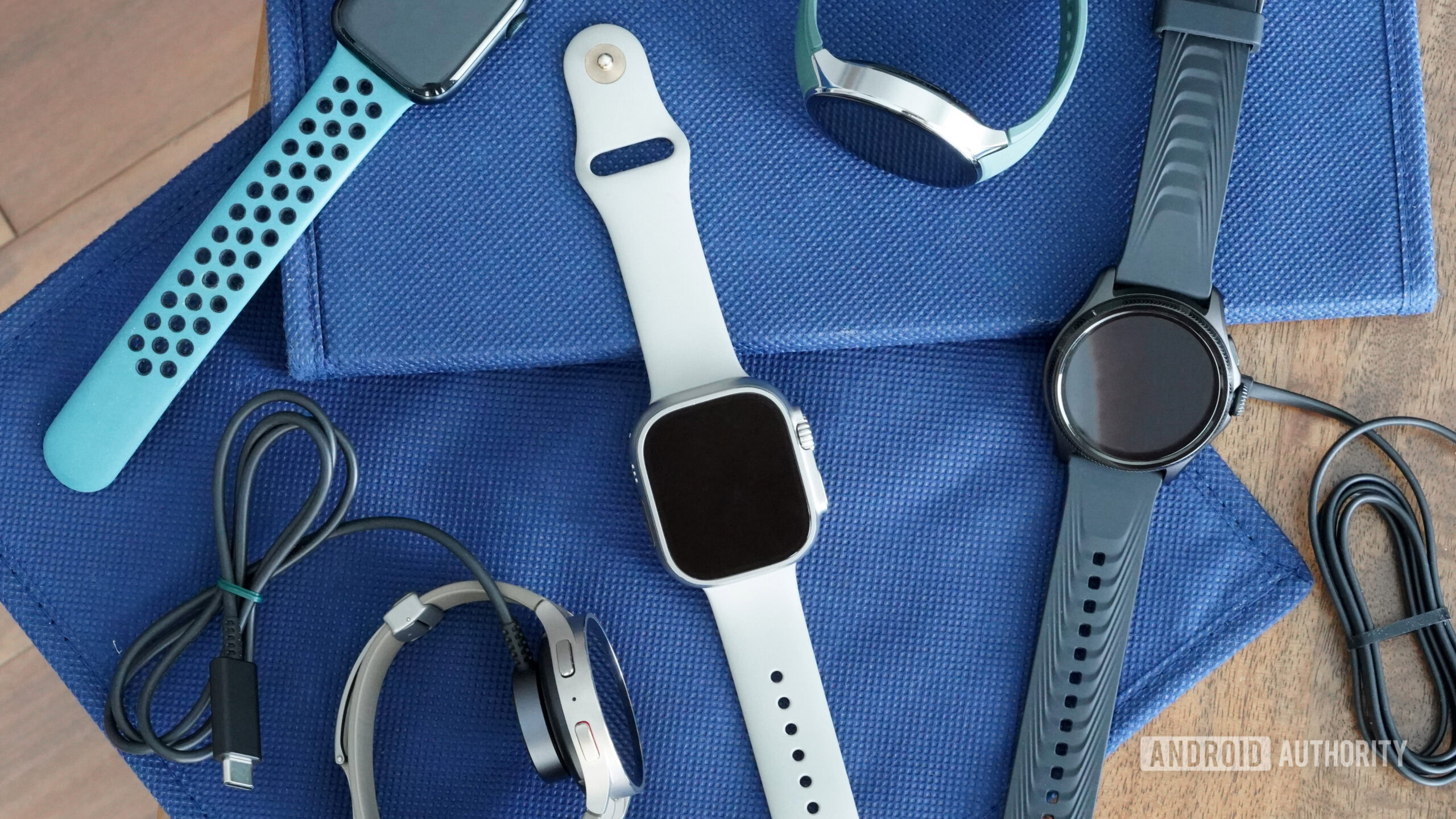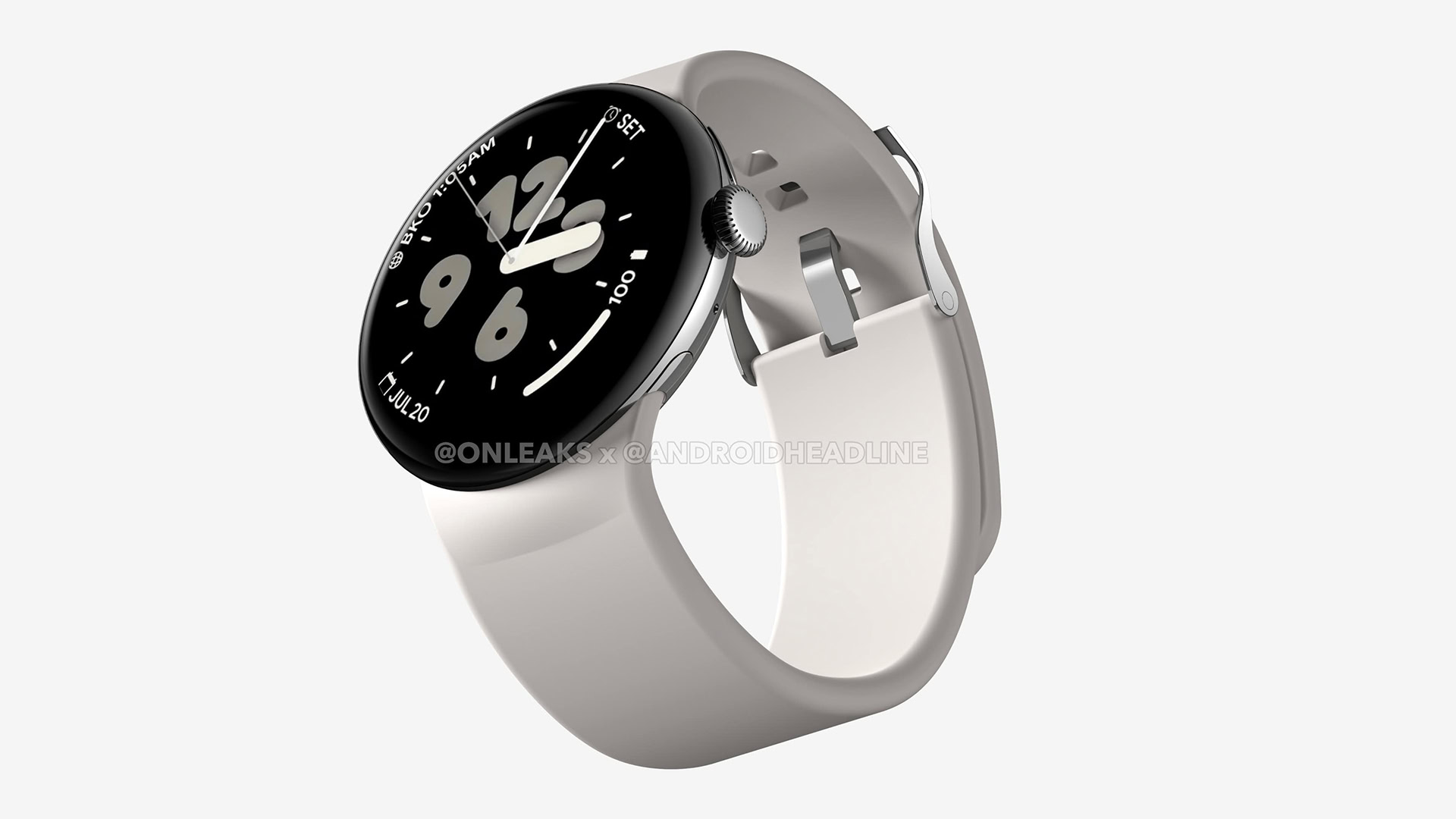
Kaitlyn Cimino / Android Authority
From persistent rumors to leaked images, an XL variant of the Google Pixel Watch 3 is all but confirmed to be heading to shelves this fall. Though I’m not usually one to put the cart before the horse, I’m already emotionally committed to the larger build. However, I don’t just want a bigger screen; I want a bigger battery.
Third time’s the charm

Rita El Khoury / Android Authority
Compared to the Apple Watch line on its tenth entry and the Galaxy Watch line about to introduce its seventh, Google’s smartwatch lineup is fairly fresh. In fact, it existed as rumors for more years than it has existed on wrists. It finally debuted in 2022, and though the OG model had a lot of first-generation quirks, we were all largely gracious and willing to patiently see how Google would improve over time. When the Pixel Watch 2 landed a year later, I was happy to see a few key improvements and dubbed the device a “solid second draft.”
Google’s smartwatch is moving in the right direction, but battery life is the single biggest factor holding the lineup back.
However, I’ve yet to adopt the line as my daily driver, and to be honest I wouldn’t even rank it as my top Wear OS pick. Like all smartwatches, there are a range of minor tweaks I’d love to see on the line, but the single factor holding the Pixel Watch back the most is battery life. The Pixel Watch 2 claims 24 hours of battery life and, in practice, just barely makes that mark.
That means a disciplined charging schedule if you don’t want to find yourself with a dead device (and missed sleep tracking stats if you slack off too close to bedtime). The second generation introduced fast charging, alleviating some of the first generation’s battery woes, but a single day of use between charges still feels like a major hindrance compared to other Wear OS options. If Google wants to earn a permanent place on my wrist, it will need to keep up with the competition this year.
Would battery life influence your decision to buy the Google Pixel Watch 3 XL?
6 votes
Power-packed Wear OS competition

Kaitlyn Cimino / Android Authority
Samsung’s Galaxy Watch 6 series devices, arguably the most popular Wear OS watches, offer up to 30 hours between charges, allowing for a lot more wiggle room. The suped-up Galaxy Watch 5 Pro stretches even further with a 490mAH cell to power up to 80 hours between charges. Each of these devices is set to be replaced by newer models in the coming weeks, which may offer even better power efficiency and charge times. If the Galaxy Watch 7 and 7 Pro raise the bar, I hope the Pixel Watch 3 XL can rise to the occasion.
| Battery life claim | |
|---|---|
|
Pixel Watch 2 |
Up to 24 hours |
|
Apple Watch Series 9 |
Up to 18 hours |
|
Apple Watch Ultra 2 |
Up to 36 hours |
|
Galaxy Watch 5 Pro |
Up to 80 hours |
|
Galaxy Watch 6 |
Up to 30 hours |
|
OnePlus Watch 2 |
Up to 100 hours |
|
Mobvoi TicWatch Pro 5 |
Up to 80 hours |
|
Garmin Venu 3 |
Up to 14 days |
Meanwhile, Wear OS players like the TicWatch Pro 5 and the OnePlus Watch 2 are already pushing battery limits even further than Samsung. Utilizing a unique dual-chip architecture to house two distinct operating systems, the OnePlus Watch 2 boasts highly effective power efficiency, resulting in up to 100 hours of use between charges. The watch can last even longer in its pared down low power mode. Likewise, the TicWatch Pro 5 leverages the power of two with a dual-display design that I can’t say enough about. This secondary low-power display offers access to key stats, useful heart rate zones during workouts, and the ability to stretch usage to up to 80 hours in smartwatch mode. In short, both these watches blew me away when it came to convenient wear.
Competitors within the Wear OS family offer much better battery life, as does Garmin and, to an extent, Apple.
Of course, I’d be remiss not to mention devices outside of the Wear OS bubble. Apple has been consistently offering an 18-hour claim for years, though the watches easily stretch to more than 24 hours in real-world experience. The Apple Watch Ultra line elevated the company’s efforts some with a 36-hour claim, but that comes at a much higher price tag. Garmin’s top smartwatch, the Venu 3, offers multi-day battery life but lacks the robust app support found on most of the devices mentioned thus far. Fitbit’s ghost of a smartwatch stable traditionally delivered multi-day battery life as well, which is what originally made the Pixel Watch line’s specs so disappointing. However, those options are no longer real contenders in the arena; the Pixel Watch line is the company’s golden child.
Big is better and also… bigger

The 41mm Pixel Watch 2 is on the smaller side and, for some users, is genuinely too small. Blessed with scrawny wrists, the device works fine as is, but my preference is always maximum display space. Not only do I want my wearable to make a statement, I want it to be as useful as possible, and that means more room for text, menus, maps, and apps. To this end, I am excited for the Pixel Watch 3 to be less dainty, but most importantly, I hope the extra cargo space is packing a bigger battery.
Rumors suggest the device will have a larger thumbprint, leaping to 45mm, or the same size as Apple’s large model. It will also reportedly be thicker, landing on wrists at 13.89mm. In my humble opinion, this should leave plenty of room for beefed-up battery life.
